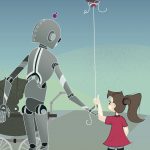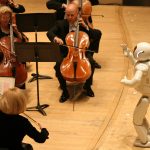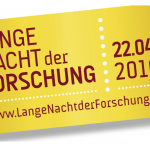Presentation: Breaking the wall of social robots as actors & networks
Robots will become as ubiquitous as computers and smartphones and thereby profoundly transform many aspects of our daily lives. As the psychologist Sherry Turkle frames it, we have reached the “robotic moment”, the moment where we are ready to delegate important interactions of human relationships to robots. That means, we let social robots be the teaching companions for the young and the caretakers for the old. But it is not so much a question of building robots sophisticated enough for our company but whether we are ready for their company.
In fact, we will form similar relationships with robots as we do with our friends today. While this seems uncanny to many of you, that is what the present generation of social robotics is offering. But the key questions is not whether technology is good or bad, but to understand the relationships and changes happening between society and technology. In order to reframe this relationship, we have to overcome the modernist concept with its distinction between subjects and objects. Therefore, my idea is to apply the perspective of the actor-network-theory to the field of robotics and open a debate beyond a social or technological deterministic view.
The perspective of a network is particularly useful, because we are at a turning point – the robotic moment. When robots enter our daily lives, a disruption is happening and connections become visible, which have been there all along but were invisible before. The actor-network-theory by Callon and Latour, uses the same vocabulary to describe both humans and non-humans. All social, technological and natural objects can be actors, which are interdependent, meaning it is not possible to assume that one actor is given and used explain the others. Looking at the connections between robots, people, physical and cultural spaces as actors with an agency, gives a new perspective on the present shifts in society and technology as it avoids the problem from the modernist distinction between subjects and objects.
Presenter: Benjamin Stangl
The Falling Walls Lab took place on April 22. 2016 during the Lange Nacht der Forschung, at the Technisches Museum Wien, Mariahilfer Str. 212, 1140 Vienna.



